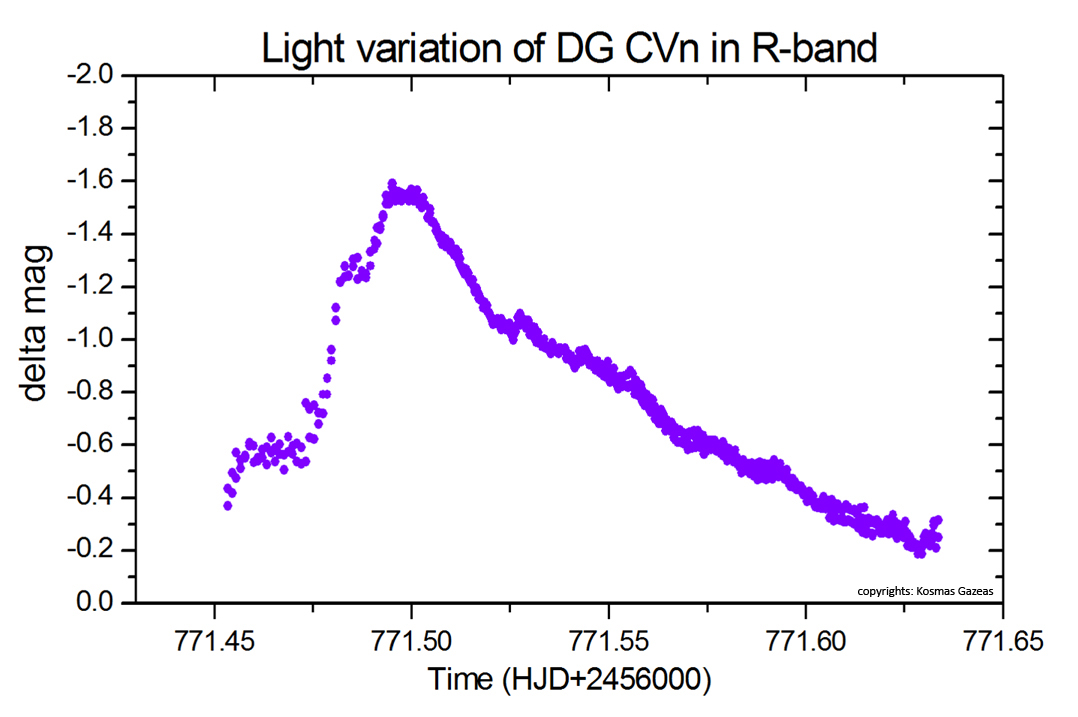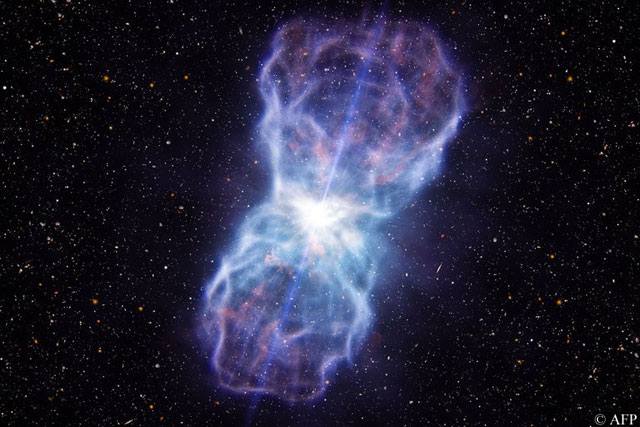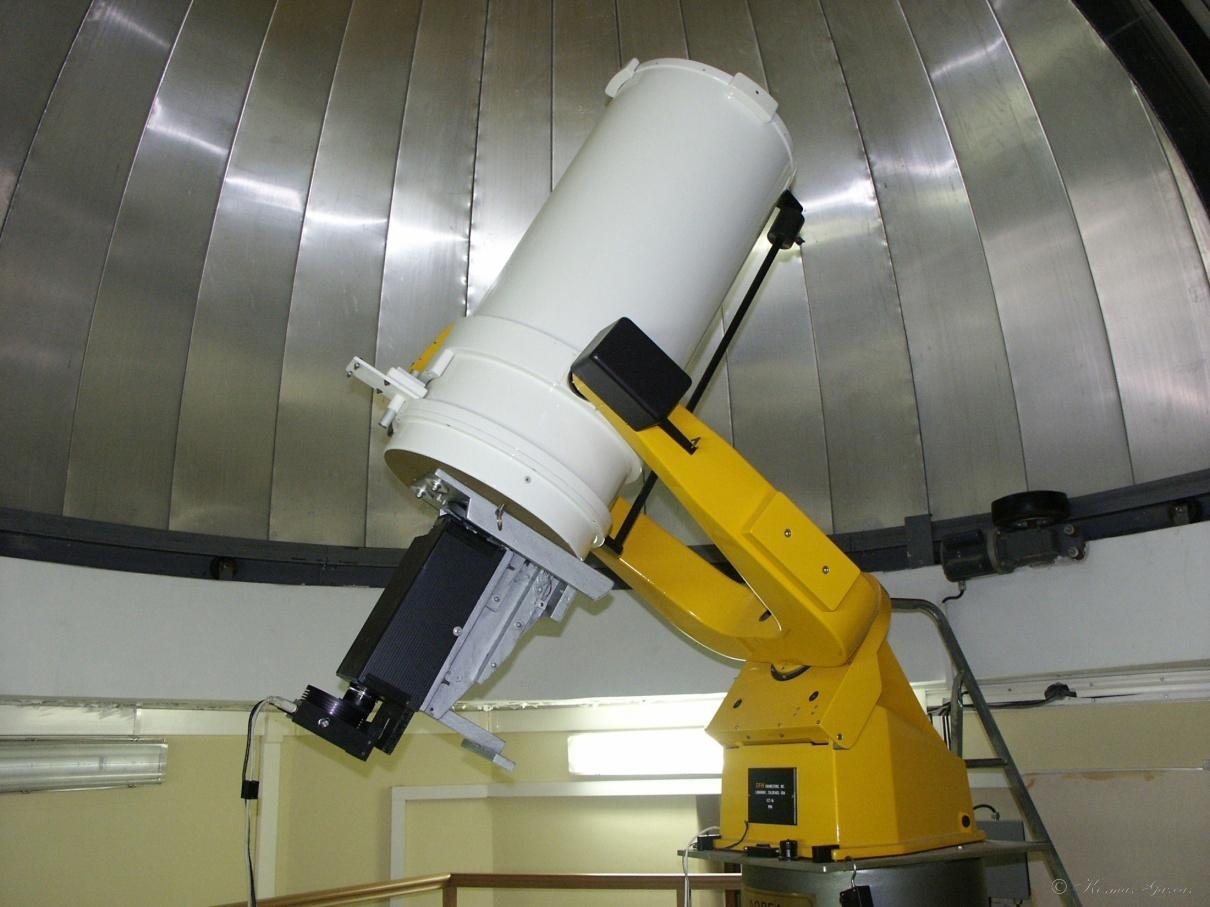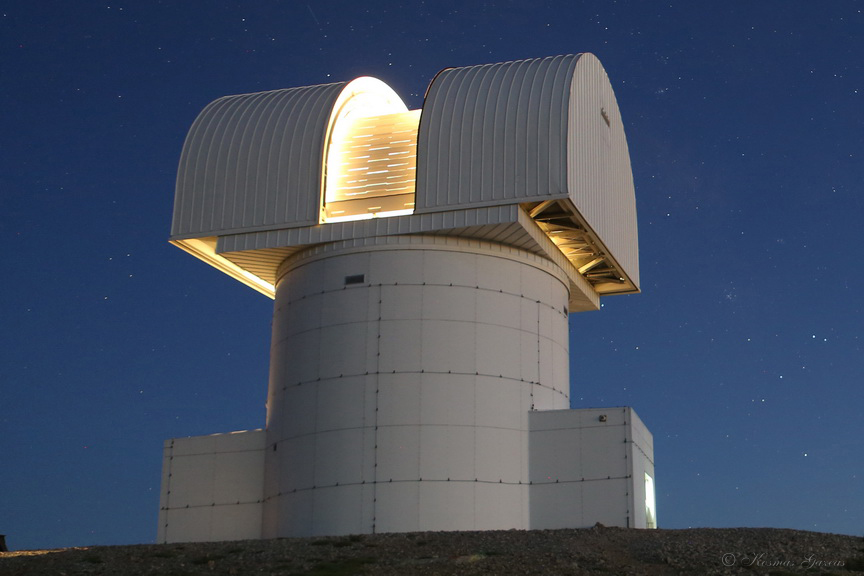Gamma-Ray Burst (GRB) Project
Gamma Ray Burst (GRB) Project is an optical monitoring program, initiated on April 2012 by Prof. Kanaris Tsiganos and Dr. Konstantinos Sapountzis at the University of Athens with observational support of Dr. Kosmas Gazeas.
The transient nature of the Gamma-Ray Bursts makes a de jure observing plan impossible. The burst afterglow of a GRB may appear simultaneously with the main burst (prompt emission), just after it (early afterglow), and it might be observable from some days (main phase) until few weeks (late phase). The most widely accepted scenario for the afterglow interpretation is the so called 'external shock scenario'. A detailed summary over the observational properties and the physical processes is given by Godet & Mochkovitch 2011. According to the specific model the afterglow spectrum is produced by synchrotron radiation of electrons being accelerated on the dilated shell and interfering with the magnetic field at place. The theoretical calculation (Sari et al 1998) is in a good extent consistent with the observations and provides forms for the afterglow spectrum. A network whose purpose is the real-time (and near real-time) distribution of GRB locations detected by various spacecraft (Swift, Fermi, MAXI, INTEGRAL, IPN, etc), and the distribution of follow-up observation reports submitted by the GRB community. A list with some of the instruments participating in the various bands of the spectrum can be found here: http://gcn.gsfc.nasa.gov/gcn member sites.html
Instruments
GRB Project utilizes basically the 0.40 m f/8 robotic and remote controlled telescope at the University of Athens Observatory, which is equipped with a ST10 XME CCD camera and a UBVRI filter set (Bessell specifications). In addition, during 2014 and 2015 observing runs, the 2.3 m 'Aristarchos' telescope at Helmos Observatory was planned to be used if a fainter target is to be observed. When a GRB occurs, SWIFT/XRT is triggered and sends an announcement to all observers through GCN network. Our telescopes are aiming the given coordinates a few minutes after this trigger.
Sample Light Curves
 The photometric light curve of DG CVn in R band. This is a highly active flare star, which triggered SWIFT/XRT and gave
maximum brightness. The University of Athens Observatory aimed towards this target a few minutes after SWIFT/XRT trigger and captured a secondary flare.
The photometric light curve of DG CVn in R band. This is a highly active flare star, which triggered SWIFT/XRT and gave
maximum brightness. The University of Athens Observatory aimed towards this target a few minutes after SWIFT/XRT trigger and captured a secondary flare.
 Sample of the photometric variability of the active black hole V404 Cyg during one observing night.
The University of Athens Observatory aimed towards this target a few minutes after SWIFT/XRT trigger and continued monitoring its variability for the following 70 nights.
Sample of the photometric variability of the active black hole V404 Cyg during one observing night.
The University of Athens Observatory aimed towards this target a few minutes after SWIFT/XRT trigger and continued monitoring its variability for the following 70 nights.
In 2014 the dwarf flare star DG CVn has been observed during a massive flare event. This photometric observation brings the University of Athens Observatory in collaboration with Rachel Osten at NASA, Goddard Space Flight Center while the optical variability of this highly active flare star is recorded from Athens and combined with space data (SWIFT X-ray and UV data) in order to investigate the mechanisms of energy production inside DG CVn.
Team members
GRB Project is a collaboration between the University of Athens (Greece) and the National Observatory of Athens. The major collaborators are:





